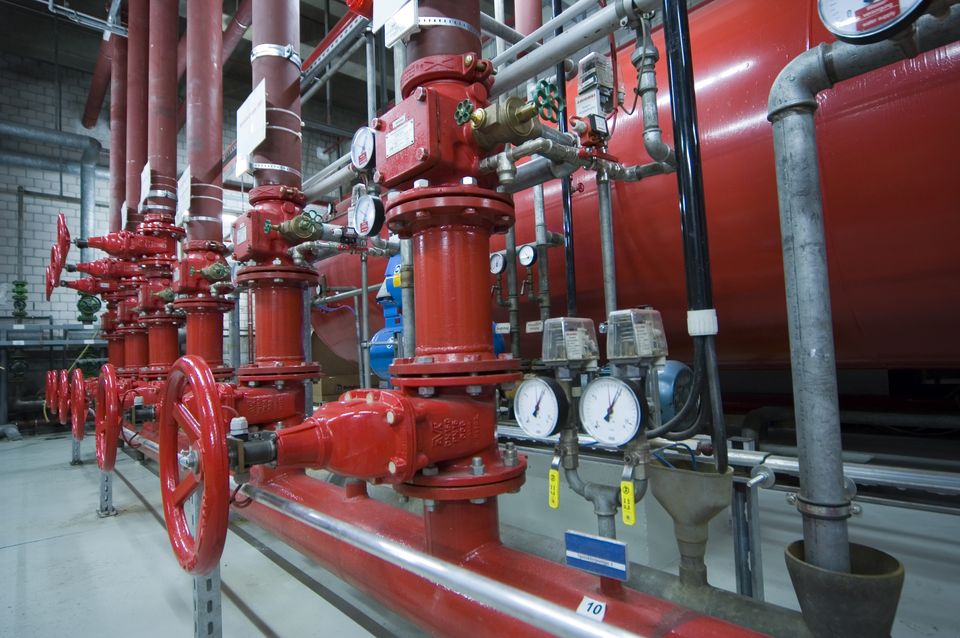Easy-to-Follow Guidelines for Resolving Low Water Pressure in Your Home
Easy-to-Follow Guidelines for Resolving Low Water Pressure in Your Home
Blog Article
Have you been looking for tips involving 9 Reasons for Low Water Pressure in Your House?

Low tide stress in your house can be an irritating trouble, influencing every little thing from bathing to washing dishes. If you're experiencing weak water circulation, there are numerous possible causes and solutions to discover. In this overview, we'll go over usual reasons for low water stress and useful actions to resolve the concern successfully.
Intro to Low Water Pressure
Low water stress occurs when the circulation of water from your taps, showers, and other components is weaker than normal. This can make daily jobs much more tough and much less efficient. Recognizing the sources of low tide pressure is vital to finding the ideal remedy.
Common Causes of Low Water Stress
Pipeline Obstructions
With time, pipes can become blocked with natural resource, debris, or debris, restricting the circulation of water. This is a common problem in older homes with galvanized steel pipelines.
Corrosion
Deterioration within pipes can lead to leakages and reduced water stress. Corrosion accumulation can tighten water flow, specifically in aging plumbing systems.
Faulty Stress Regulators
Pressure regulatory authorities are accountable for keeping consistent water pressure in your house. If they malfunction, it can cause low water pressure or uneven circulation throughout your house.
Community Supply Of Water Issues
Often, the issue lies outside your home. Community water supply problems, such as main line leaks or upkeep work, can momentarily decrease water stress in your location.
Just How to Identify Low Water Pressure
Inspecting Taps and Components
Begin by examining the water stress at various taps and components throughout your home. If the problem is isolated to certain locations, it might show localized problems.
Checking Pipes
Examine noticeable pipes for signs of leaks, deterioration, or clogs. Take notice of any type of unusual audios, such as banging or rattling pipelines, which could suggest issues within the plumbing system.
Consulting with a Plumber
If you're not able to pinpoint the source of low tide pressure, consider employing a professional plumber to perform a thorough evaluation. They can identify underlying issues and advise appropriate solutions.
DIY Solutions to Fix Low Tide Pressure
Cleaning Up Aerators and Showerheads
Natural resources can collect in aerators and showerheads, reducing water flow. Get rid of and cleanse these elements frequently to improve water stress.
Flushing Hot Water Heater
Debris accumulation in the water heater can limit flow and lower efficiency. Flushing the tank occasionally aids eliminate debris and preserve optimum efficiency.
Examining Pressure Regulatory Authority
Guarantee that the stress regulator is working properly. Adjusting or changing the regulatory authority can aid restore correct water stress throughout your home.
Clearing Up Clogs in Water Lines
For small blockages, try utilizing a plumbing snake or chemical drainpipe cleaner to clear obstructions in pipes. Beware when utilizing chemicals and comply with safety standards.
When to Call a Specialist Plumber
If DIY efforts fail to solve the concern or if you think substantial plumbing troubles, it's best to seek support from a licensed plumber. They have the proficiency and tools to resolve complicated concerns safely and efficiently.
Safety Nets to Keep Water Pressure
Regular Maintenance
Arrange regular upkeep for your plumbing system to avoid concerns such as rust, leaks, and obstructions. Resolving minor troubles early can aid avoid even more considerable repair services later.
Setting Up a Pressure Booster
Consider setting up a stress booster pump to boost water stress in locations with continually reduced flow. This can be especially advantageous for multi-story homes or properties with high-demand components.
Surveillance Water Usage
Be mindful of water use routines and prevent overtaxing the plumbing system. Easy adjustments, such as incredible showers and laundry lots, can aid maintain adequate water stress.
Verdict
Managing low tide pressure can be frustrating, yet recognizing the underlying reasons and implementing proper options can recover optimal flow throughout your home. Whether it's cleaning up aerators, examining pipelines, or speaking with a plumber, taking aggressive steps can ensure a stable supply of water for your daily needs.
FOUR WAYS TO FIX LOW WATER PRESSURE NOW
Turning on a shower or faucet only to find the water comes out in a sad, slow drizzle is never a good feeling. How exactly are you supposed to wash a pan or take a quick shower when it takes 10 minutes just to rinse off a little soap? The good news is that when your water pressure is bad, there's always a cause: typically one that can be easily fixed. Here are some of the most common causes of low pressure and what you can do to fix the issue:
DEBRIS AND MINERAL DEPOSIT BUILDUPS
If you notice low water pressure from just one or two of the fixtures in your house, the problem likely has to do with debris buildup. Water is full of minerals and other debris, all of which can accumulate in your pipes and on your fixtures. This can cause a blockage that affects how much water flows through. To fix this, try filling a small plastic bag with white vinegar, and use a rubber band to hang it around your showerhead or faucet. Let the head of the fixture soak for a few hours, and the vinegar should loosen the deposits.
WATER LEAKS
Leaks are another common cause of low water pressure. If water is flowing out of your plumbing through a hole or crack before it can reach your fixture, the pressure coming out of the faucet or showerhead will be lower. A plumbing professional is your best bet for finding and repairing a leak in your water supply pipes.
Leaks are another common cause of low water pressure. If water is flowing out of your plumbing through a hole or crack before it can reach your fixture, the pressure coming out of the faucet or showerhead will be lower. A plumbing professional is your best bet for finding and repairing a leak in your water supply pipes.
FOUR WAYS TO FIX LOW WATER PRESSURE NOW
Turning on a shower or faucet only to find the water comes out in a sad, slow drizzle is never a good feeling. How exactly are you supposed to wash a pan or take a quick shower when it takes 10 minutes just to rinse off a little soap? The good news is that when your water pressure is bad, there's always a cause: typically one that can be easily fixed. Here are some of the most common causes of low pressure and what you can do to fix the issue:
DEBRIS AND MINERAL DEPOSIT BUILDUPS
If you notice low water pressure from just one or two of the fixtures in your house, the problem likely has to do with debris buildup. Water is full of minerals and other debris, all of which can accumulate in your pipes and on your fixtures. This can cause a blockage that affects how much water flows through. To fix this, try filling a small plastic bag with white vinegar, and use a rubber band to hang it around your showerhead or faucet. Let the head of the fixture soak for a few hours, and the vinegar should loosen the deposits.
WATER LEAKS
Leaks are another common cause of low water pressure. If water is flowing out of your plumbing through a hole or crack before it can reach your fixture, the pressure coming out of the faucet or showerhead will be lower. A plumbing professional is your best bet for finding and repairing a leak in your water supply pipes.
Leaks are another common cause of low water pressure. If water is flowing out of your plumbing through a hole or crack before it can reach your fixture, the pressure coming out of the faucet or showerhead will be lower. A plumbing professional is your best bet for finding and repairing a leak in your water supply pipes.
A VALVE ISSUE
If you have low water pressure throughout your home, check your main shut-off valve to make sure it's completely open. You may also want to see if there's a pressure-reducing valve installed. If there is, have a plumber help you adjust the settings to get the pressure you're looking for.
OTHERS USING WATER
Believe it or not, your low water pressure could be caused by your neighbors. If you notice low pressure at certain times of day, it may be because you and the people living next to you have similar schedules - when everyone is showering at the same time, the pressure will be lower in every home. Low pressure throughout the neighborhood may also be caused by an issue with your municipal water supply. If that's the case, call the supplier to see if they're working on the issue.
https://www.rotorooter.com/blog/water-leaking/low-water-pressure-fixes/

I recently found that write up about Low Water Pressure in the House? when doing a search on the search engines. Enjoyed reading our blog posting? Please quickly share it. Help another person discover it. Thanks for being here. Kindly check up our blog back soon.
Book My Estimate Report this page